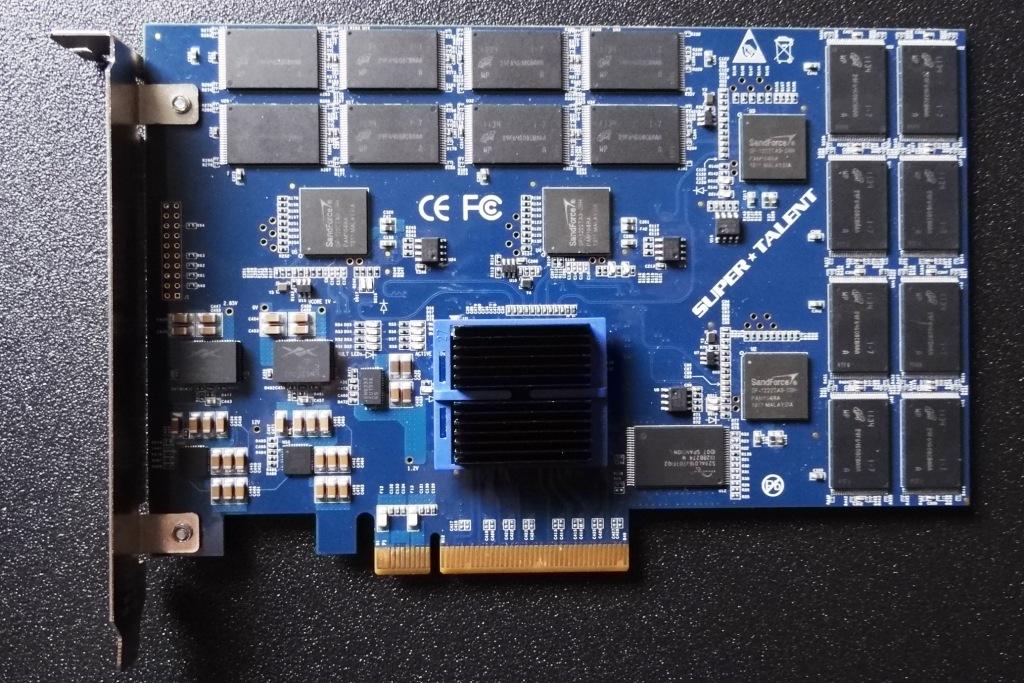SNIA, who’s stated goal is “to promote acceptance, deployment, and confidence in storage-related architectures, systems, services, and technologies, across IT and business communities”, has announced that they will be forming a PCIe SSD Taskforce.
This taskforce is charged with the duty of coordinating and providing guidance to the PCIe SSD marketplace. Their campaign will apparently include educational materials, best practices documents, and SNIA standards.
For those unaware of SNIA, they are the Storage Networking Industray Association and the goal of this newly formed taskforce is to promote consolidation when it comes PCIe SSDs. Specifically, topics such as physical design, electrical characteristics, as well as the software interface which allows data transfer over PCIe, will be among the main areas of concern. It is expected that this will allow the PCIe SSD market to expand, making products more usable across disparate hardware and software platforms.
I have to say, this news couldn’t have come at better moment. With new PCIe SSD product announcements appearing on a regular basis, it would seem that the time is ripe to spearhead a standardization process. Considering the recent release of NVMe’s common driver, the momentum towards a maxim now seems stronger than ever. Indeed, at the very least, it would certainly make life significantly easier for IHV’s, who have thus far had to develop their own proprietary PCIe SSD interfaces in house. With the acceptance of a universal standard, much of the heavy lifting will already have been taken care of, letting the various vendors focus on things like performance, cost, and added value.
Certainly, it seems that the last point will be a must, especially if this attempt at standardization proves to be a success. Don’t get me wrong, the consolidation of hardware and software standards is an admirable ambition, especially in this industry. The only potential fly in the ointment is that, by giving companies a template with which to design their SSDs around, the committee behind the standard could actually help create an influx of new competition that, conceivably, would have never existed otherwise. In turn, the industry could end up in a situation similar to that seen in the SATA SSD market, that is, saturated to the point where product separation becomes, in many cases, almost impossible.
If the above scenario does come to fruition, manufacturers will have to face facts, adding extra icing to their speedy confections in an attempt to make them increasingly enticing to customers, who would now have more options than ever. In fact, while companies are bemoaning the loss of limited opposition, buyers will prove to be the main beneficiaries of the newly built up industry, with fierce competition now being par for the course.
Here’s hoping that the standardization of PCIe SSDs will push ahead without any hiccups to put the process on hold, ushering in a new era of extreme SSD performance across numerous platforms. If this possible golden age can manage to get off the ground, it will be a ‘prosperous’ time for potential consumers, who will reap the benefits of the ‘harmony’ created by the standardization of hardware and software. In addition, the new found ‘stability’ could serve to give PCIe SSDs an ‘iron’ like presence in the solid state storage industry. In my case, the ‘peace’ of mind provided by such a notion is positively satisfying.
 The SSD Review The Worlds Dedicated SSD Education and Review Resource |
The SSD Review The Worlds Dedicated SSD Education and Review Resource | 

As far as the higher-end consumer market goes, I wonder if this would help eliminate some of the compatibility issues with various motherboard manufacturers and/or models. That is one drawback to products such as the OCZ Revo-series — far too few motherboards that it is actually compatible with. You would think that manufacturers would recognize that a very large new customer base would be available in both the consumer and enterprise segments; and that dilution of the market by too many choices (such as is the current situation with SATAIII SSD’s) would be quite a ways out.
bring on standardization and competition so we can finally see the end of stupidly high prices for what should be a reliable and fast commodity product.
You imply that competition and standardization will result in commodity products at low prices and that this is a bad think.
The real fly in the ointment is the capitalist system which touts competition really relies on socialistic protections via patents and copywrite while using the courts to slow down product development and limit competition via patents for obvious things.